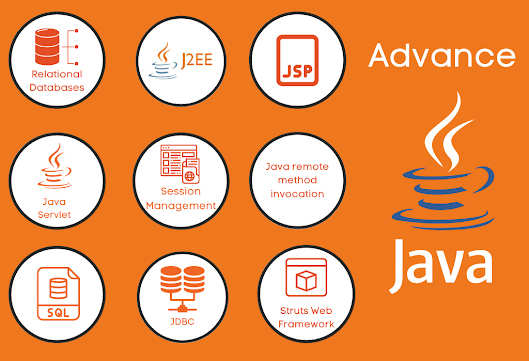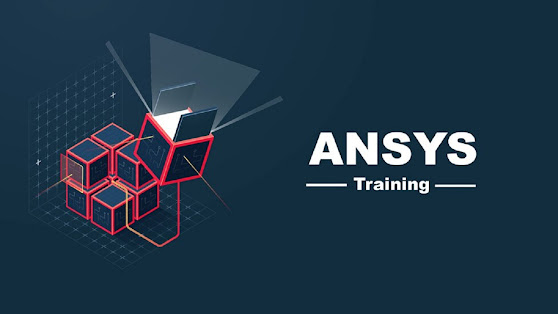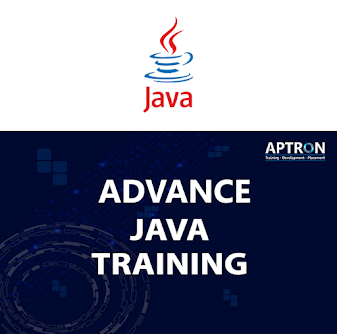Web Development Institute in Noida
Web Development Institute in Noida - APTRON Solutions
Introduction:
Are you looking to embark on a rewarding journey in web development? Look no further than APTRON Solutions, the leading web development institute in Noida. With a proven track record of excellence, APTRON Solutions stands as a beacon of quality education, shaping aspiring web developers into industry-ready professionals. In this article, we will explore the key features, courses, and advantages that make APTRON Solutions a preferred destination for Web Development Training in Noida.
Why Choose APTRON Solutions?
Comprehensive Curriculum: APTRON Solutions offers a comprehensive web development curriculum that covers all aspects of web development, from the fundamentals of HTML, CSS, and JavaScript to advanced frameworks and technologies like React, Angular, and Node.js. This well-structured syllabus ensures that students receive a holistic understanding of web development.
Expert Faculty: APTRON Solutions takes pride in its team of expert faculty members. Each instructor brings years of industry experience and possesses in-depth knowledge of the latest trends and best practices in web development. Their guidance empowers students to tackle real-world challenges with confidence.
Hands-on Training: The institute adopts a practical approach to learning, emphasizing hands-on training. Through numerous real-world projects and assignments, students gain valuable experience, enhancing their problem-solving abilities and boosting their portfolio.
State-of-the-art Infrastructure: APTRON Solutions provides a modern and conducive learning environment. Equipped with cutting-edge technology and resources, the institute ensures that students have access to the best tools for their skill development.
Placement Assistance: APTRON Solutions understands the importance of launching a successful career in web development. The institute offers placement assistance to its students, connecting them with top companies in the industry. This support increases their chances of securing lucrative job opportunities.
Courses Offered:
Full-Stack Web Development: A comprehensive program that covers both front-end and back-end technologies, making students proficient in the entire web development stack.
Front-end Web Development: Focusing on front-end technologies like HTML, CSS, JavaScript, and various frameworks, this course equips students with skills to create visually appealing and responsive web applications.
Back-end Web Development: This course delves into server-side programming, databases, and server management, enabling students to build robust and scalable web applications.
MEAN/MERN Stack Development: Specialized courses that teach students how to work with popular JavaScript-based stacks (MEAN or MERN) to create dynamic and feature-rich web applications.
Advantages of Enrolling in APTRON Solutions:
- Industry-recognized certification upon course completion.
- Flexible batch timings for working professionals and students.
- Regular workshops and seminars by industry experts for practical insights.
- Well-equipped labs with the latest software and hardware resources.
- Supportive and friendly learning environment for effective skill development.
- What Is Web Development? Web Development: Exploring the Backbone of the Internet Web development is the process of creating and maintaining websites or web applications that are accessible via the internet or an intranet. It involves a combination of skills, technologies, and methodologies to design, build, and manage websites that cater to various purposes and functionalities. From simple static web pages to complex dynamic web applications, web development plays a pivotal role in shaping the online world we interact with daily. Key Components of Web Development: Front-end Development: Also known as client-side development, front-end development deals with the visual and interactive aspects of a website that users directly interact with. Front-end developers use technologies like HTML (Hypertext Markup Language), CSS (Cascading Style Sheets), and JavaScript to create the layout, design, and user interface of a website. They ensure that the website is responsive, visually appealing, and provides a smooth user experience. Back-end Development: In contrast to front-end development, back-end development, or server-side development, focuses on the behind-the-scenes operations that power the website. Back-end developers work on the server, databases, and application logic, handling data processing, user authentication, and server-side functionalities. Common back-end languages and frameworks include PHP, Python, Ruby, Node.js, and databases like MySQL, MongoDB, and PostgreSQL. Full-Stack Development: A full-stack developer is proficient in both front-end and back-end development. They have a holistic understanding of the entire web development process and can handle all aspects of building a web application from start to finish. Full-stack developers are versatile and can seamlessly switch between different technologies as needed. Web Development Process: Planning and Analysis: The web development process begins with thorough planning and analysis. Developers and stakeholders identify the purpose of the website, target audience, and desired features. They create a detailed roadmap and define the project scope. Design: The design phase involves creating wireframes and visual mock-ups of the website's layout and user interface. Designers work closely with developers to ensure a seamless user experience and an attractive design. Development: During the development phase, front-end and back-end developers collaborate to bring the design and functionality to life. They write code, integrate databases, and implement features according to the project requirements. Testing: Rigorous testing is conducted to identify and fix any bugs, errors, or compatibility issues. This includes functional testing, usability testing, performance testing, and cross-browser testing. Deployment: Once the website passes testing, it is deployed to a web server, making it accessible to users via the Internet. Maintenance: Web development is an ongoing process. Websites require regular updates, security patches, and maintenance to ensure they remain functional and secure. Web development is the backbone of the Internet, enabling the creation of websites and web applications that connect individuals, businesses, and organizations across the globe. It combines creativity with technical expertise, empowering developers to build powerful and interactive online platforms that enhance our digital experiences. As technology continues to evolve, web development will remain a crucial field, shaping the future of the digital world we live in.
Conclusion:
APTRON Solutions has rightfully earned its reputation as the premier Web Development institute in Noida. With its comprehensive curriculum, expert faculty, practical approach, and focus on student success, the institute stands as a top choice for individuals aspiring to make a mark in the web development industry. By enrolling in APTRON Solutions, you take the first step towards a promising and rewarding career in the world of web development.





Comments
Post a Comment